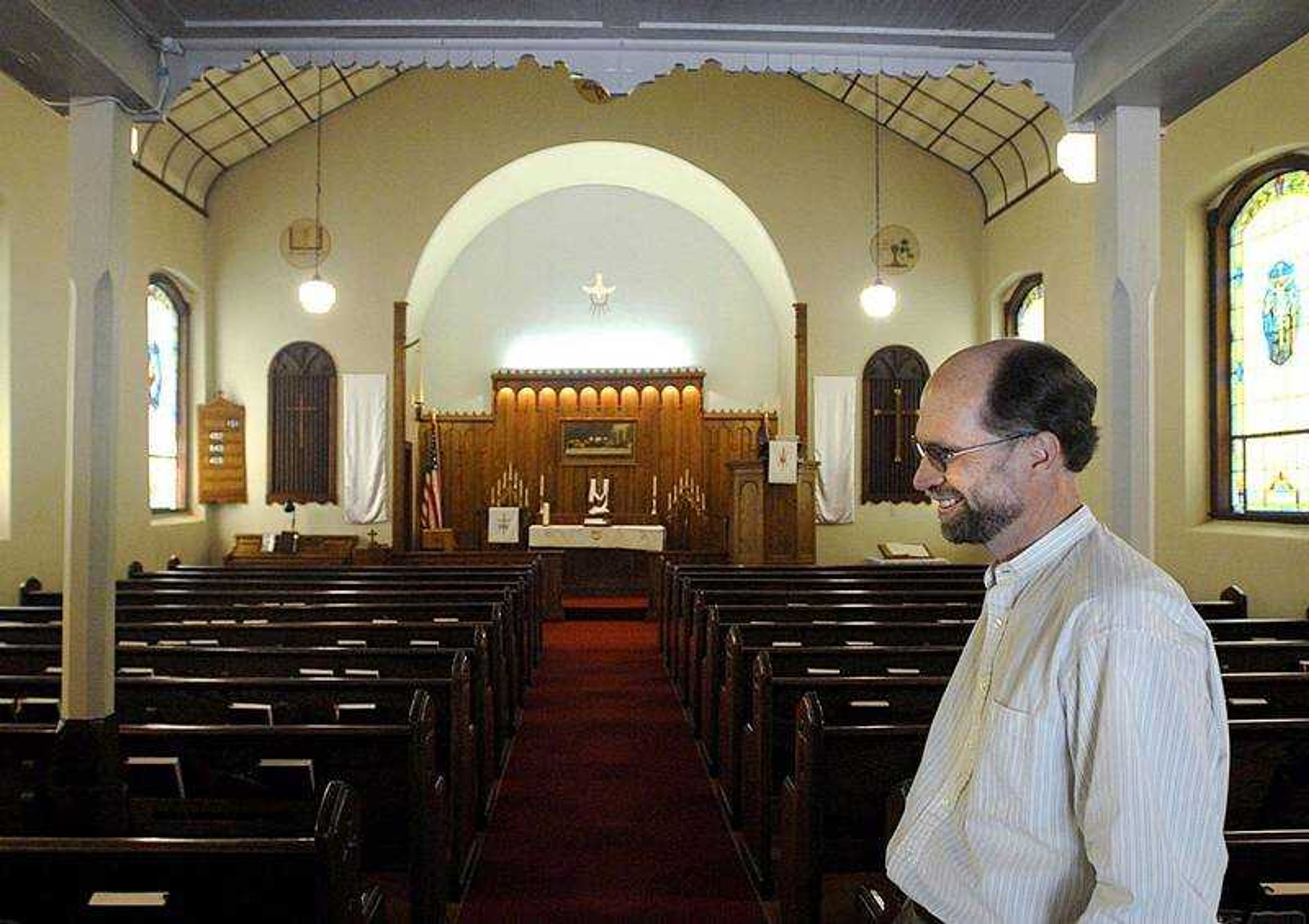Friedheim Lutheran church celebrates 160 years in a 150-year-old building
FRIEDHEIM, Mo. -- History and tradition are etched in the stone that built Trinity Lutheran Church. The congregation at Trinity celebrates its 160th anniversary Sunday in the 150-year-old church. The first church built in 1848 was a log cabin, according to church records. Beginning in 1843, the first German immigrants who settled in what was then called Dyssen, later named Friedheim, worshipped in a private home and a traveling minister gave sacraments and preached once a month...
FRIEDHEIM, Mo. — History and tradition are etched in the stone that built Trinity Lutheran Church.
The congregation at Trinity celebrates its 160th anniversary Sunday in the 150-year-old church. The first church built in 1848 was a log cabin, according to church records. Beginning in 1843, the first German immigrants who settled in what was then called Dyssen, later named Friedheim, worshipped in a private home and a traveling minister gave sacraments and preached once a month.
By 1847 the community had grown enough to call its own pastor, the Rev. Friedrich Julius Biltz, who was one of the first students to graduate from the original log-cabin Concordia Seminary in Altenburg, Mo. Biltz was also expected to teach school. The salary he was paid was not enough to support himself and his family, according to records, and he often did manual labor to supplement his income.
A year after he was called, the congregation — about 20 families — built a log cabin church that also served as a school. In 1857, the congregation began building the church that still stands, using sandstone mined from land owned by the Ignatz family about a quarter of a mile away. The Rev. Roger Steinbrueck, Trinity's current pastor, said that although no mining is done there today, a member of the church still owns that land.
According to church records, a team of two oxen pulled the stones from the quarry to the church site. Larger stones required four oxen. The stones were put into place, records read, "by planks being placed against the walls and long poles used to lift them into place."
The members of the church worked together to build it at a cost of $500.
As the community grew and prospered, it was able to support a full-time pastor, a school and several teachers. Over the years, the congregation added steeples to the church, installed a bell and pipe organ and built a large lighted cross atop the steeple. The cross eventually came down and was moved to the cemetery. It was replaced by another lighted cross. The church has been lovingly restored and maintained throughout the years. Stained-glass windows, paraments and other additions to the building have been donated in memory of family members.
"People in the congregation have roots that are very, very deep," Steinbrueck said. "They can go out in the cemetery and tell you how they're related to the people in the graveyard."
To commemorate the church's 160 years, the congregation put together two booklets. One is a history of facts and dates, the other is made up of recollections of the church's early days, when women and men sat on different sides of the sanctuary and services were conducted in German. Members have written of their memories of church picnics, of being paid a dime to sit by the organist and crank the instrument, and of the people who made up the congregation and the community.
Bill Bogenpohl wrote of going to church in a Model T. "I also remember when the preacher's salary was $800 a year," he wrote. "People would contribute $10 or $15 a year towards the church expenses. The preacher had a milk cow, and he churned his own butter. He also had corn planted. He would chop off the corn. I and others helped to shuck the corn and put it in his shed for feed."
Friedheim, mostly a farming community now, is no longer a bustling town, but the church thrives with 280 members. Twice a month it offers Saturday services at 5:30 p.m. for people who cannot attend Sunday morning services. Music at those services is provided by guitar and fiddle because the organist is unavailable. There's an active Sunday school, Ladies Aid, softball and dart ball teams, vacation Bible school, youth group and men's club.
"It's an opportunity for the congregation to get together and celebrate who they are, and that's a good thing," Steinbrueck said.
lredeffer@semissourian.com
335-6611, extension 160
Connect with the Southeast Missourian Newsroom:
For corrections to this story or other insights for the editor, click here. To submit a letter to the editor, click here. To learn about the Southeast Missourian’s AI Policy, click here.










